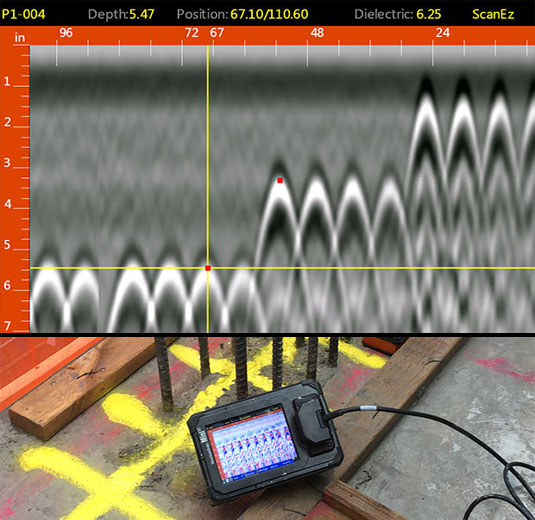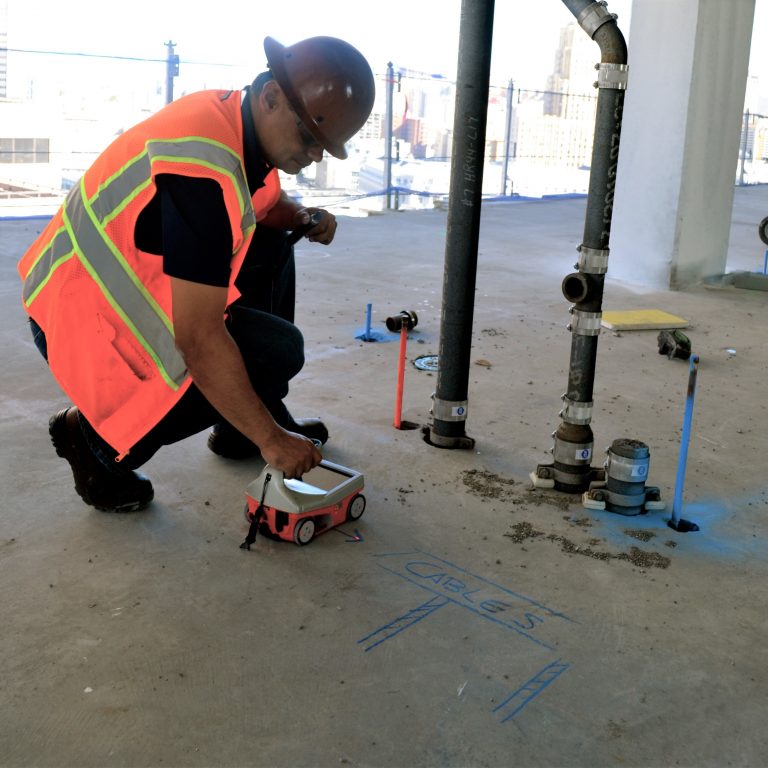Taking Full Advantage Of Effectiveness and Reducing Threats: The Duty of Concrete Scanning in Building And Construction
In the realm of building, where precision and security are critical, the use of concrete scanning technology has actually become a crucial tool for task managers and designers alike. By taking advantage of innovative scanning techniques, building and construction groups can navigate complicated settings with increased effectiveness while reducing possible dangers that can threaten both budget plans and timelines. The elaborate dance in between making the most of performance and lessening dangers in building joints on the ability to peer below the surface area, revealing a globe of concealed obstacles and chances. The function of concrete scanning in this delicate equilibrium is not merely supportive yet transformative, offering a glimpse into a future where costly blunders are preempted, safety and security is focused on, and high quality is non-negotiable.

Relevance of Concrete Scanning
Concrete scanning plays an essential function in making sure the structural integrity and safety of building and construction projects by accurately spotting embedded things and prospective dangers within concrete structures. By making use of numerous scanning innovations such as ground-penetrating radar (GPR) and electromagnetic induction, building and construction teams can determine rebar, post-tension wires, avenues, and other concealed obstacles prior to exploration, cutting, or coring into concrete. This aggressive method aids avoid costly problems, injuries, and project delays that may develop from mistakenly striking these things throughout construction activities.
In addition, the exact mapping of ingrained objects makes sure the reliable implementation of building strategies, minimizing the danger of errors and making sure the longevity and toughness of the built setting. Inevitably, spending in concrete scanning services contributes to the general success and safety of building tasks.

Advanced Innovation in Construction
Provided the increasing demand for precision and effectiveness in building and construction methods, the combination of sophisticated technology has actually become instrumental in boosting project outcomes and making certain ideal safety and security actions. BIM enables for better collaboration amongst stakeholders, enhanced visualization of the job, and improved decision-making throughout the building process. The implementation of Increased Truth (AR) and Online Fact (VIRTUAL REALITY) modern technologies in building layout and planning phases makes it possible for stakeholders to envision the final item, identify prospective issues, and make essential changes prior to construction starts.

Advantages of Object Mapping
The utilization of item mapping technology in building and construction jobs uses a multitude of benefits that enhance task preparation and implementation. Among the vital advantages of things mapping is its capability to supply exact and thorough details about the place of underground utilities, structural elements, and other things within the construction site. This info is vital for guaranteeing that excavation and exploration tasks are performed safely and efficiently, decreasing the risk of damage to existing facilities.
Furthermore, things mapping modern technology makes it possible for construction teams to produce precise 3D designs of the website, enabling for much better visualization of the job and improved sychronisation amongst various trades - RainierGPR Concrete Scanning. This boosted spatial understanding aids to recognize prospective clashes and disputes early in the drawing board, decreasing the requirement for pricey rework and hold-ups throughout construction
Furthermore, things mapping can likewise simplify the documentation procedure by offering electronic documents of the site previously, during, and after building and construction. These documents offer as useful references for future maintenance and renovation projects, inevitably boosting the lasting efficiency and sustainability of the built atmosphere.
Stopping Pricey Errors
Object mapping modern technology's function in construction expands beyond improving project preparation and implementation to incorporate an important aspect: protecting against expensive errors. By utilizing advanced concrete scanning strategies, construction teams can identify possible threats such as rebar congestion, post-tension cords, best site or spaces within concrete structures. Overall, the positive use of concrete scanning modern technologies in building jobs significantly decreases the threat of errors and inevitably adds to cost savings and project effectiveness.
Ensuring Safety and Quality
To support the highest possible criteria of safety and high quality in construction projects, the application of concrete scanning modern see this website technology plays a crucial role. By making use of innovative scanning methods such as ground-penetrating radar (GPR) and electro-magnetic induction, building and construction groups can discover potential risks hidden within concrete frameworks prior to beginning any job. This aggressive strategy not just minimizes the risk of accidents on the building and construction site however additionally guarantees the structural honesty of the building.
Concrete scanning additionally aids in confirming the positioning of rebar, avenues, and post-tension wires, ensuring that these elements are properly positioned according to the design specifications. This accuracy in finding essential components aids stop errors throughout the construction procedure, eventually leading to a higher top quality finished item. Moreover, by determining any type of abnormalities or disparities within the concrete early, required changes can be made immediately, reducing the possibility of rework and costly delays.
Fundamentally, concrete scanning innovation functions as an important tool in guarding both the security of building and construction employees and the total top quality of the developed setting. Its capacity to find possible dangers and make certain adherence to style criteria makes it an important property in contemporary construction techniques.

Conclusion
To conclude, concrete scanning plays a critical function in maximizing effectiveness and minimizing dangers in construction tasks. By using innovative technology for object mapping, possible costly blunders can be prevented, making sure safety and security and high quality of the final framework. It is crucial for construction companies to focus on the usage of concrete scanning to enhance efficiency, alleviate threats, and provide premium cause their projects.
Concrete scanning plays an important duty in ensuring the structural stability and safety and security of construction projects by properly discovering embedded things and potential threats within concrete frameworks. The execution of Increased Reality (AR) and look at these guys Digital Truth (VIRTUAL REALITY) technologies in construction layout and preparation phases allows stakeholders to visualize the final item, determine possible issues, and make needed adjustments before construction begins. By using advanced concrete scanning strategies, building groups can determine prospective risks such as rebar blockage, post-tension cords, or gaps within concrete structures. Generally, the aggressive use of concrete scanning modern technologies in building projects substantially lessens the risk of errors and eventually adds to set you back financial savings and project efficiency.
To promote the highest possible requirements of security and high quality in construction jobs, the implementation of concrete scanning modern technology plays a crucial duty.